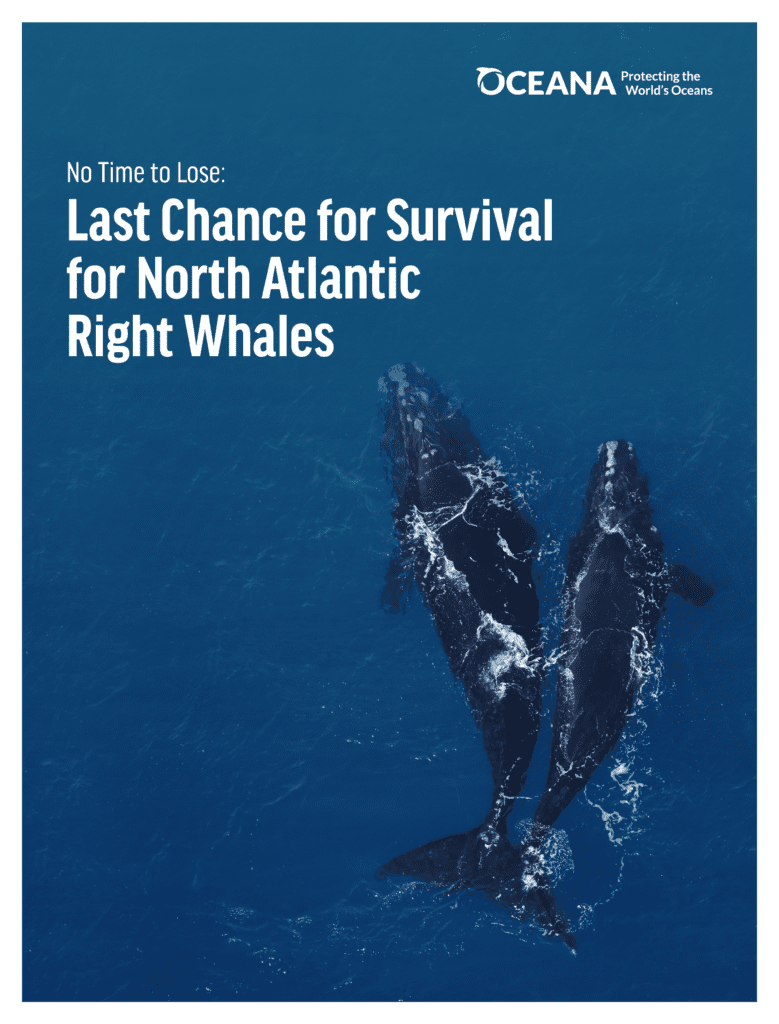Report | September, 2019
Last Chance for Survival for North Atlantic Right Whales
The North Atlantic right whale is one of the most endangered large whales on the planet. They were named for being the “right” whale to hunt because they were often found near shore, swim slowly and tend to float when killed.
Right whale populations first crashed due to whaling until hunting this species was banned in 1935. Now the right whale is on the brink of extinction mostly due to threats from commercial shipping and fishing. At normal operating speeds, ships cannot maneuver to avoid right whales, putting the whales at great risk of strikes, which can cause deadly injuries from blunt force trauma or cuts from the propellers. Additionally, a jungle of roughly one million fishing lines sprawls across right whale migration routes and feeding areas in the U.S. and Canada. These ropes have been seen wrapped around right whales’ mouths, fins, tails and bodies, and cut into the whales’ flesh, which can lead to life-threatening infections. Emerging threats like seismic airgun blasting, a process used to search for oil and gas deep below the seafloor, put the species at even greater risk.
Today, only about 400 North Atlantic right whales remain, including fewer than 100 breeding females. To reverse course, North Atlantic right whales must be protected from fishing gear entanglements and ship strikes.
Reducing the amount of vertical lines from fishing gear in the water and requiring ships to slow down can help save North Atlantic right whales.
Media Contacts:
Megan Jordan, 202.868.4061, mjordan@oceana.org
Dustin Cranor, 954.348.1314, dcranor@oceana.org




